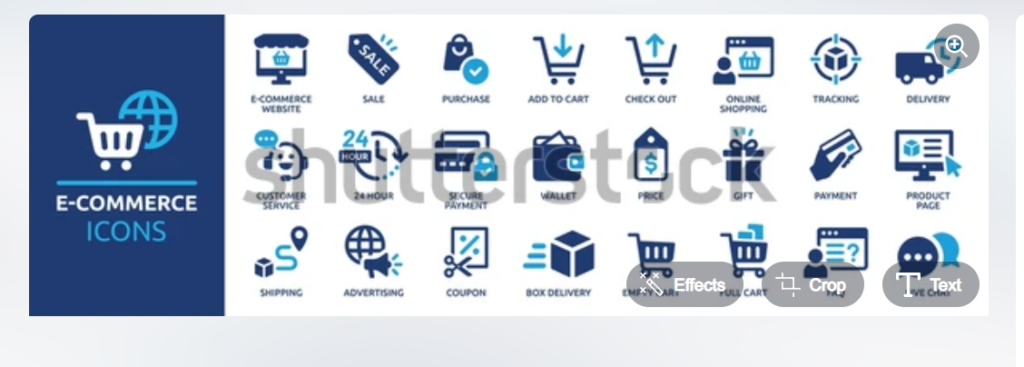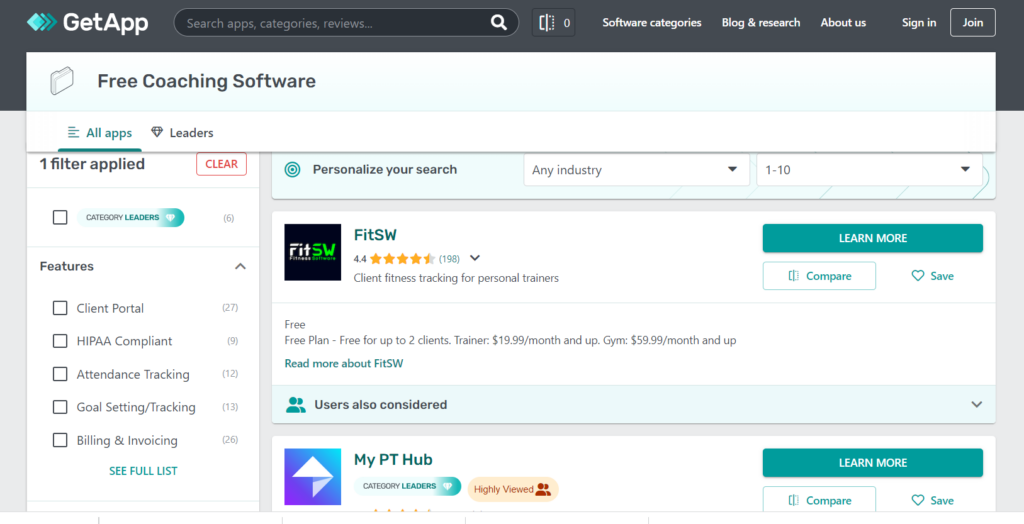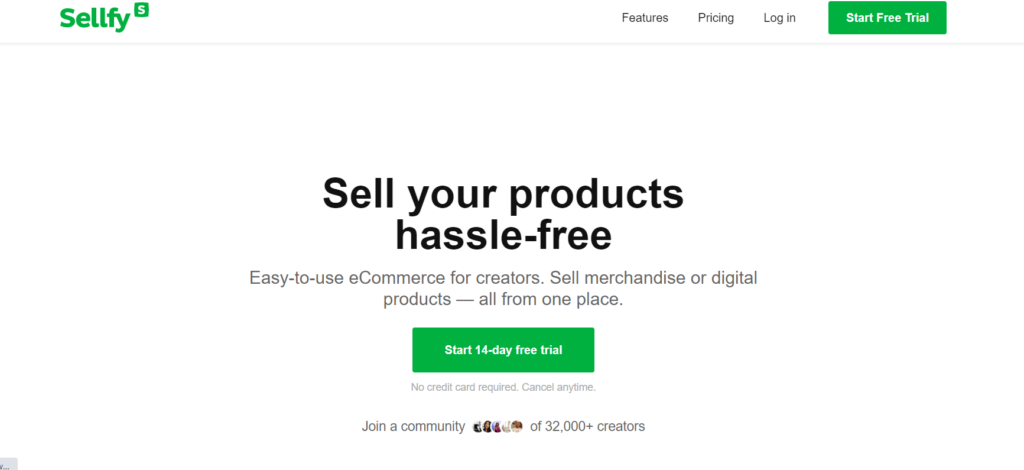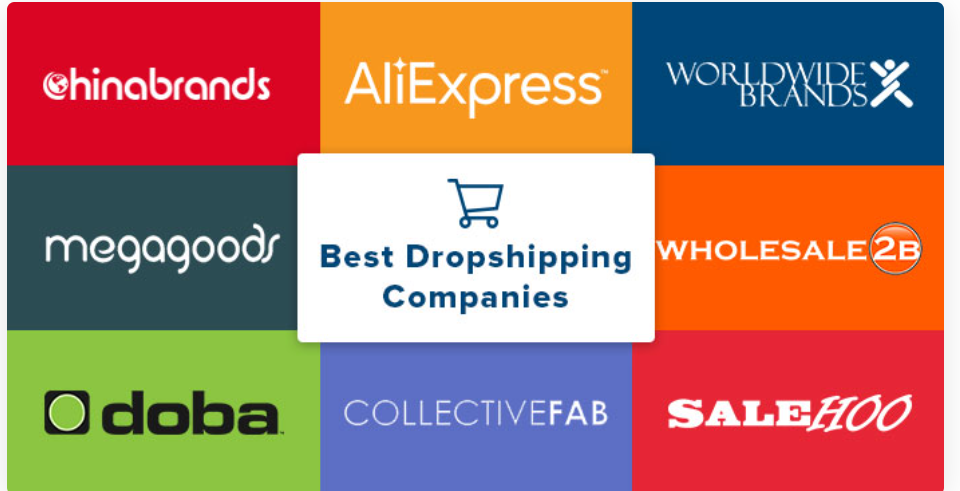Online business ideas, also known as an e-commerce or internet-based business, is a commercial enterprise of making money online that conducts its operations primarily over the internet. Instead of having a physical storefront or location, online businesses use the internet as their primary platform to sell products or services, connect with customers, and manage their operations. Online businesses can be small, home-based operations or large multinational corporations. They leverage various digital marketing strategies, online payment processing systems, and e-commerce platforms to reach and serve their target audience. The internet provides opportunities for online Business Ideas to reach a global market and operate with lower overhead costs compared to traditional brick-and-mortar businesses. Making Money online is not a challenged today.
How can one get benefited by online business
Engaging in an online business for making money online can offer numerous benefits, both for individuals and organizations.It’s important to note that while online businesses offer many benefits, they also come with their own challenges and risks. Success in the online business world requires a strong online presence, effective marketing, quality products or services, and a well-thought-out business strategy. Additionally, staying updated on industry trends and maintaining a focus on customer satisfaction are crucial for long-term success.

Here are some of the advantages and ways in which one can benefit from online business:
- Wider Reach
- Lower Overhead Costs
- Flexibility
- Reduced Inventory Management
- Data-Driven Decision Making
- Scalability
- Accessibility
- Automation
- Diverse Monetization OptionsReduced Geographic Limitations
- interests
- Lower Entry Barriers
- Analytics and Optimization
- Global Partnerships
- Reduced Environmental Impact
Best software for online business

Various aspects of managing an online business:
- E-commerce and Website Management:
- E-commerce Platforms: Shopify, WooCommerce (WordPress), BigCommerce, Magento
- Content Management Systems (CMS): WordPress, Joomla, Drupal
- Website Builders: Wix, Weebly, Squarespace
- Online Marketing and SEO:
- Email Marketing: Mailchimp, Constant Contact, GetResponse
- SEO and Keyword Research: SEMrush, Ahrefs, Moz
- Social Media Management: Hootsuite, Buffer, Sprout Social
- Pay-Per-Click Advertising: Google Ads, Microsoft Advertising (formerly Bing Ads)
- Payment Processing and Invoicing:
- Payment Gateways: PayPal, Stripe, Square
- Invoicing and Accounting: QuickBooks, FreshBooks, Xero
- Subscription Billing: Chargebee, Recurly, Stripe Billing
- Customer Relationship Management (CRM):
- CRM Software: Salesforce, HubSpot CRM, Zoho CRM
- Customer Support and Helpdesk: Zendesk, Freshdesk, Intercom
- Project Management and Collaboration:
- Project Management: Asana, Trello, Monday.com
- Team Communication and Collaboration: Slack, Microsoft Teams, Toggl Plan
- Analytics and Reporting:
- Web Analytics: Google Analytics, Adobe Analytics
- Business Intelligence (BI): Tableau, Power BI, Looker
- Heatmap and Session Recording: Hotjar, Crazy Egg
- Content Creation and Design:
- Graphic Design: Adobe Creative Cloud, Canva, GIMP
- Video Editing: Adobe Premiere Pro, Final Cut Pro, DaVinci Resolve
- Content Creation and Scheduling: Adobe Spark, Buffer, Loom
- Security and Privacy:
- Antivirus and Firewall: Norton, McAfee, Kaspersky
- Virtual Private Network (VPN): ExpressVPN, NordVPN, CyberGhost
- Website Security: Sucuri, Wordfence, Cloudflare
- Inventory and Order Management:
- Inventory Management: TradeGecko, Cin7, QuickBooks Commerce
- Order Management: ShipStation, Orderhive, Skubana
- Customer Feedback and Survey Tools:
- Survey and Feedback: SurveyMonkey, Typeform, Google Forms
- Backup and Data Storage:
- Cloud Storage: Dropbox, Google Drive, OneDrive
- Backup Solutions: Backblaze, CrashPlan, Acronis True Image
- Time and Productivity Management:
- Time Tracking and Productivity Tools: Toggl, RescueTime, Clockify
- Task Automation: Zapier, Integromat, Microsoft Power Automate
- E-commerce Analytics and Optimization:
- E-commerce Analytics: Glew, Metrilo, Kissmetrics
- Conversion Rate Optimization (CRO): Optimizely, VWO (Visual Website Optimizer), Convert
Best online business ideas to earn money
There are countless online business ideas you can explore, and the best one for you depends on your interests, skills, resources, and the specific market you want to target.
Here are some popular online business ideas, along with strategies for earning money from them:
1. E-commerce Store
In today’s digital age, e-commerce stores have revolutionized the way we shop, turning the internet into a bustling marketplace where consumers can browse, purchase, and receive products with just a few clicks.

How to Start E- commerce business
Opening an e-commerce store involves several key steps to establish a successful online business. Here’s a step-by-step guide on how to get started:
Start by identifying your target market, niche, and the products you want to sell. Research your competition and understand your potential customers’ preferences and needs.
Create a comprehensive business plan that outlines your e-commerce business’s goals, budget, marketing strategies, and operational details.
Choose a legal structure for your business, such as a sole proprietorship, LLC, or corporation. Register your business with the appropriate authorities and obtain any necessary licenses or permits.
Choose a unique and relevant domain name for your e-commerce store. Purchase a domain and select a reliable hosting provider to ensure your website is accessible to customers.
Choose an e-commerce platform to build your online store. Popular options include Shopify, WooCommerce (for WordPress), Magento, and BigCommerce. Select a platform that aligns with your business needs and technical expertise.
- Website Design:
Design your e-commerce website with a user-friendly layout, appealing visuals, and easy navigation. Ensure that it is mobile responsive for customers on smartphones and tablets.
Add your products to the e-commerce platform, including product descriptions, high-quality images, prices, and inventory information. Organize products into categories for easy navigation.
Set up a payment gateway to accept online payments securely. Options include PayPal, Stripe, and credit card processing services. Ensure your payment process complies with security standards.
- Shipping and Fulfillment:
Determine your shipping options and rates. Consider offering various shipping methods, including standard, express, and international shipping. Set up a system to track orders and handle fulfillment.
- Legal Compliance:
Create terms and conditions, privacy policy, and return policies for your e-commerce store. Ensure that you comply with data protection laws, such as GDPR, and e-commerce regulations.
Implement security measures, such as SSL certificates, to protect customer data and transactions. Regularly update and maintain your website to prevent security vulnerabilities.
- Marketing and SEO:
Develop an online marketing strategy that includes search engine optimization (SEO), social media marketing, email marketing, and pay-per-click advertising to attract and retain customers.
- Content Creation:
Create valuable content, including product descriptions, blog posts, and multimedia content, to engage and inform your audience. Quality content can also improve your SEO rankings.
Set up customer support channels, such as email, live chat, or a phone line, to assist customers with inquiries, issues, and product information.
- Analytics and Monitoring:
Implement analytics tools, such as Google Analytics, to track website traffic, user behavior, and sales performance. Use this data to make informed business decisions.
After thorough testing and ensuring that everything is in order, launch your e-commerce store to the public. Promote your store through your marketing channels and begin attracting customers.
Continuously update your website with fresh content, add new products, and improve user experience. Stay informed about industry trends and emerging technologies.
- Expansion and Growth:
- As your e-commerce business grows, consider expanding your product offerings, entering new markets, and enhancing customer experience to maintain long-term success.
Opening an e-commerce store is a significant undertaking that requires planning, dedication, and ongoing effort. By following these steps and staying focused on your target market, you can build a successful online business.
Idea: Start an online store selling physical or digital products. Consider dropshipping, private labeling, or handmade goods.How to Earn Money: Make a profit by selling products at a markup over your cost. Focus on product selection, marketing, and providing excellent customer service.
2. Online Consulting or Coaching
In today’s fast-paced and highly competitive world, individuals and businesses are constantly seeking ways to overcome challenges, grow, and achieve their goals. This quest for improvement has led to a surge in online consulting and coaching services.

With the power of the internet, experts in various fields can now connect with clients from around the globe, providing guidance, support, and knowledge to help them navigate the complexities of life and business. In this article, we will explore the world of online consulting and coaching, the benefits it offers, and how it is transforming personal and professional development.
How to open a online Coaching
Opening an online coaching business can be a rewarding endeavor, allowing you to share your expertise and help individuals or groups achieve their goals. Here are the steps to help you get started with your online coaching business:
- Choose Your Niche
- Conduct Market Research
- Define Your Coaching Services
- Develop Your Coaching Skills
- Business Plan
- Legal Considerations
- Online Presence
- Technology and Tools
- Content Creation
- Pricing Structure
- Marketing and Promotion
- Sales Funnel
- Client Onboarding
- Coaching Materials
- Schedule Management
- Ongoing Development
- Client Support
- Feedback and Reviews
- Data Protection
- Scale and Expand
3. Selling Digital Product
Selling digital products is a popular and scalable online business model that allows you to offer a wide range of downloadable goods, such as e-books, software, courses, music, artwork, and more.
There Are Lots of websites for selling Digital Product

1. Understanding the Digital Product Landscape:
Common examples include:
- E-books and guides
- Software and applications
- Online courses and e-learning materials
- Stock photos and graphics
- Audio and video content
- Templates and design assets
- Digital art and creative works
- Website themes and plugins
- Online tools and utilities
2. The Benefits of Selling Digital Products:
Selling digital products offers several advantages:
a. Low Overhead Costs: Digital products don’t require physical production, warehousing, or shipping, reducing overhead costs.
b. Scalability: You can sell digital products to an unlimited number of customers without worrying about inventory.
c. Automation: Digital product delivery and sales processes can be automated, saving you time and effort.
d. Global Reach: You can reach customers worldwide, transcending geographical boundaries.
e. Passive Income: Once created, digital products can generate passive income over time.
3. Choosing Your Niche:
Identify your niche or target audience. Consider your expertise, interests, and the market demand for your chosen niche. It’s essential to create digital products that align with your knowledge and cater to a specific audience.
4. Creating High-Quality Digital Products:
Invest time and effort in producing high-quality digital products. Ensure they are well-designed, error-free, and provide real value to customers. This quality will establish your reputation and lead to positive reviews and word-of-mouth referrals.
5. Distribution and Delivery:
Decide how you’ll distribute your digital products. You can use your own website or platforms like:
- E-commerce platforms (e.g., Shopify, WooCommerce)
- Digital marketplaces (e.g., Etsy, Gumroad, or Amazon Kindle)
- Membership sites (for subscription-based digital content)
6. Pricing Strategy:
Set competitive yet profitable prices for your digital products. Research what similar products are selling for in your niche, and consider offering promotions, bundles, or tiered pricing to attract different customer segments.
7. Marketing and Promotion:
Effective marketing is essential to reach your target audience. Employ various digital marketing strategies:
- Create a professional website with product descriptions, testimonials, and a blog.
- Utilize social media platforms for promotion and engagement.
- Invest in email marketing to nurture and retain customers.
- Collaborate with influencers in your niche.
- Run paid advertising campaigns on platforms like Google Ads and Facebook Ads.
8. Customer Support:
Provide excellent customer support by promptly responding to inquiries, addressing issues, and ensuring a seamless purchasing experience. Happy customers are more likely to become repeat buyers.
9. Protecting Your Digital Assets:
To prevent unauthorized distribution or copying of your digital products, consider using digital rights management (DRM) tools or encryption.
10. Continuous Improvement:
Regularly update and enhance your digital products based on customer feedback and changing market trends. This demonstrates your commitment to quality and customer satisfaction
Idea: Create and sell digital products, such as e-books, software, printables, or online courses on topics you’re knowledgeable in.
How to Earn Money: Price your digital products competitively, and market them effectively through your website, social media, or online marketplaces.
4. Affiliate Marketing
Affiliate marketing is a powerful online business model that allows individuals and businesses to earn income by promoting products or services offered by other companies. It’s a win-win for all parties involved – the product or service owner, the affiliate marketer, and the consumer. In this article, we’ll explore what affiliate marketing is, how to create an affiliate marketing strategy, and the numerous benefits it offers.

What Is Affiliate Marketing?
Affiliate marketing is a performance-based marketing model in which individuals (affiliates) promote products or services through unique affiliate links. When a consumer makes a purchase through the affiliate’s link, the affiliate earns a commission. The key components of affiliate marketing include:
- Product/Service Owner: The company or individual offering the product or service.
- Affiliate Marketer: The person or entity promoting the product or service.
- Consumer: The end user who makes a purchase through the affiliate’s referral link.
How to Create an Affiliate Marketing Strategy:
- Choose a Niche: Select a niche that aligns with your interests, expertise, and the market’s demand. This will help you build credibility and enjoy what you’re promoting.
- Research Affiliate Programs: Find affiliate programs that match your niche. You can do this through affiliate networks (e.g., Amazon Associates, ClickBank, ShareASale) or by reaching out to companies directly.
- Build a Platform: You’ll need a platform to promote affiliate products. This can be a blog, website, social media channels, email list, or a combination of these. Your platform should have valuable content and an engaged audience.
- Select Products: Choose products or services to promote based on relevance to your audience and their potential to convert. Consider factors like product quality and the affiliate commission rate.
- Create Valuable Content: Develop content that informs, educates, or entertains your audience. Integrate affiliate links naturally within your content, and use compelling calls to action to encourage clicks.
- Promote Ethically: Be transparent about your affiliate relationships. Clearly disclose that you may earn a commission from the recommended products or services.
- Optimize for Conversions: Continuously analyze your affiliate marketing performance. A/B test your strategies, track conversions, and refine your approach for better results.
Benefits of Affiliate Marketing:
- Low Entry Barrier
- Passive Income
- Diverse Income Streams
- No Customer Support
- Global Reach
- Cost-Effective Marketing
- Scalability
- Learn Valuable Skills
Affiliate marketing is a versatile and accessible business model that offers numerous benefits, including the potential for passive income, diversification, and scalability. By carefully selecting your niche, choosing the right affiliate programs, and creating high-quality content, you can build a successful affiliate marketing strategy that generates income and helps you achieve your financial goals.
How to Earn Money: Drive traffic to your affiliate links by creating valuable content and building a loyal audience. Choose affiliate products relevant to your niche.
5. Blogging or Vlogging
In today’s digital age, blogging has emerged as a powerful medium for self-expression, information sharing, and even income generation. Whether you’re an individual with a passion for a particular subject or a business aiming to connect with your target audience, a well-crafted blog can be a dynamic tool. This article explores the world of blogging, offering insights into the art and science behind it.
Best Blogging sites in 2023
1. Wix (www.wix.com)
2. WordPress (www.wordpress.org)
3. LinkedIn (www.linkedin.com)
4. Weebly (www.weebly.com)
5. Medium (www.medium.com)
6. Ghost (www.ghost.org)
7. Blogger (www.blogger.com)
9. Joomla (www.joomla.org)10. Jimdo (www.jimdo.com)
8. Tumblr (www.tumblr.com)

What we mean as Blogging
Blogging is a versatile form of online communication where individuals or organizations regularly post content on a specific website, often in reverse chronological order. These posts, known as “blog posts,” can cover a wide range of topics, from personal diaries to niche hobbies, news, and industry insights.
- Finding Your Niche
The first step in successful blogging is identifying your niche or subject matter. What are you passionate about? What knowledge or expertise can you bring to the digital world? Your niche helps you target a specific audience and build credibility within that community.
- Crafting Quality Content
The backbone of any successful blog is quality content. Content should be informative, engaging, and well-researched. Here are some key tips:
a. Catchy Headlines: A compelling title will pique readers’ interest and entice them to explore your post.
b. Valuable Information: Offer unique insights, solutions, or valuable information that keeps readers coming back for more.
c. Visual Appeal: Incorporate relevant images, infographics, and videos to make your content visually appealing.
d. Proofread and Edit: Ensure your content is free from grammatical errors and typos. A well-edited blog post exudes professionalism.
- Consistency Matters: Consistency is essential in blogging. Regularly posting content keeps your audience engaged and signals to search engines that your blog is active and relevant. Establish a posting schedule and stick to it.
- Building an Audience
Attracting and retaining readers is a significant challenge for bloggers. Here’s how to build your audience:
a. Social Media Promotion: Share your content on social platforms to reach a broader audience.
b. SEO Optimization: Optimize your content for search engines by incorporating relevant keywords.
c. Networking: Connect with fellow bloggers and engage with your readers in the comments section.
- Interactivity
Blogs thrive on interaction. Encourage readers to leave comments, share your content, and participate in discussions. Responding to comments and engaging with your audience builds a loyal readership.
- Monetization
Many bloggers seek to monetize their blogs, turning their passion into a source of income. Several strategies include:
a. Affiliate Marketing: Promoting products or services in exchange for a commission on sales.
b. Sponsored Content: Collaborating with brands to create content in exchange for payment.
c. Selling Products or Services: If you have a product or service, your blog can serve as a platform for promotion.
- Legal and Ethical Considerations
Bloggers should be aware of copyright laws, plagiarism, and ethical practices in the online space. Proper attribution of sources and respecting privacy rights are crucial.
- Adapting to Trends
The blogosphere is constantly evolving. Staying up-to-date with the latest trends, from video content to voice search optimization, can help you remain relevant and competitive.
- The Rewards of Blogging
Blogging offers a myriad of rewards, from personal satisfaction and creative expression to professional success. It’s a powerful tool for building a personal brand or promoting your business.
Blogging is more than just writing; it’s a dynamic, interactive, and evolving medium of communication. It empowers individuals and organizations to connect with audiences, share their expertise, and even generate income. With dedication, creativity, and a commitment to quality, anyone can embark on a successful blogging journey, finding their voice in the vast digital landscape. So, whether you’re passionate about cooking, technology, travel, or any other subject, start a blog today and let your digital voice be heard!
Idea: Start a blog or YouTube channel on a niche or topic you’re passionate about.
How to Earn Money: Monetize your content through advertising, sponsorships, affiliate marketing, merchandise, or premium content subscriptions.
6. Dropshipping
Dropshipping is a retail fulfillment method in which an online store doesn’t keep the products it sells in stock. Instead, when a store sells a product, it purchases the item from a third party and has it shipped directly to the customer. In this business model, the merchant (the online store owner) doesn’t need to own or stock inventory. Instead, they act as an intermediary between the customer and the supplier or wholesaler.

Dropshipping Softwares
- Dropshipping Automation Software
- AutoDS
- Chargeback & Disputes
- Charge Flow
- Product Research Tools
- Zik Analytics
- Jungle Scout
- AliExpress Dropshipping Center
- AliExpress Assistant and Cashback
- Spy Tools
- Koala Inspector
- AliInsider
- Dropship Spy
- Image & Video Editing Tools
- Fotor
- InVideo
- GIMP
- Canva
- Logo Maker
- Hatchful
- Profit, Expense & Finance Calculators
- eBay Fees Calculator
- BeProfit
- Product Title Builders
- eBay Title Builder
How to Drop shipping works

- Setting Up an Online Store: The first step is for the dropshipper (retailer) to establish an online store. This can be done using various e-commerce platforms such as Shopify, WooCommerce, Magento, or others. The online store serves as the front end where customers browse and purchase products.
- Selecting Products: The retailer identifies and selects products they want to sell in their online store. These products can come from a variety of suppliers or wholesalers who are willing to dropship their products. It’s essential to choose products that fit the retailer’s niche and target audience.
- Listing Products: The selected products are listed on the retailer’s online store. This involves creating product listings that include product descriptions, images, pricing, and any other relevant details. Retailers often set their own prices and make the products appear as if they are their own.
- Customer Orders: When a customer visits the retailer’s online store and decides to purchase a product, they place an order through the website. The retailer receives the customer’s order details, including the specific product, quantity, and shipping information.
- Order Forwarding to Supplier: After receiving an order, the retailer contacts the supplier or wholesaler (often through an online dashboard or system) to fulfill the order. The retailer provides the supplier with the customer’s order details, such as the product(s) to be shipped and the customer’s shipping address.
- Payment: The retailer pays the supplier for the product, usually at a wholesale or agreed-upon price, keeping the difference between the wholesale cost and the retail price as their profit. Payment to the supplier can be done immediately when the order is placed or at the end of a billing cycle, depending on the agreement with the supplier.
- Supplier Fulfillment: The supplier processes the order, which includes packaging the product and arranging for its shipment directly to the customer. It’s common for suppliers to use their own shipping methods and packaging. The customer might not be aware that the product is coming from a third-party supplier.
- Shipping and Delivery: The supplier ships the product to the customer’s address. The customer receives the product with the retailer’s branding or packaging, as per the retailer’s instructions.
- Customer Support: The retailer is responsible for providing customer support, including handling inquiries, addressing issues, and handling returns or exchanges. It’s important for the retailer to maintain good communication with customers to ensure a positive shopping experience.
- Monitoring and Scaling: Successful dropshippers continuously monitor their business performance, track sales, analyze customer behavior, and adjust their product offerings and marketing strategies. As the business grows, they may expand their product range or work with multiple suppliers.
This process allows dropshippers to operate without the need for physical inventory or order fulfillment, making it a flexible and low-risk business model. However, it also requires effective management of supplier relationships and a focus on providing excellent customer service to build a successful dropshipping business.
Idea: Build an e-commerce store, but instead of holding inventory, partner with suppliers who handle product fulfillment.
How to Earn Money: Make a profit by selling products at a higher price than you pay your suppliers. Focus on marketing and customer service.
7. Freelancing
One can easily start his or her career as a freelancer. Becoming a successful freelancer requires a combination of skills, strategies, and qualities. Freelancing is a work arrangement in which individuals, known as freelancers or independent contractors, provide their services on a project or task basis to clients or businesses. This work arrangement is characterized by the absence of long-term employment contracts, enabling freelancers to work for multiple clients simultaneously and have greater

Freelancing has become increasingly popular in recent years, driven by advancements in technology, the gig economy, and the desire for greater work-life balance. It offers opportunities for professionals to build diverse portfolios, gain experience across industries, and enjoy the autonomy of self-employment.
While freelancing offers many benefits, such as flexibility and the potential for higher income, it also comes with challenges, including inconsistent work, managing administrative tasks, and obtaining a steady stream of clients. Freelancers often need to be proactive in marketing their services, honing their skills, and staying current in their field to remain competitive in the market.
Freelance Websites to Find Work
- Fiverr.
- Toptal.
- Jooble.
- Freelancer.com.
- Upwork.
- Flexjobs.
- SimplyHired.
- Guru.
Here are some key steps and tips to help you become a good freelancer:
- Choose Your Niche:
Identify your area of expertise or the services you can offer as a freelancer. Specializing in a niche will help you stand out and attract clients seeking specific skills.
- Build a Strong Portfolio:
Create a portfolio showcasing your best work. Include examples, case studies, and testimonials that demonstrate your capabilities and expertise.
- Set Clear Goals:
Define your professional goals, including your income targets, the number of clients you want to work with, and the type of projects you aim to undertake.
- Self-Marketing:
Establish an online presence through a professional website, social media profiles, and a LinkedIn profile. Use these platforms to market your services and connect with potential clients.
- Network:
Attend networking events, join freelancing communities, and participate in online forums related to your niche. Networking can help you find clients, collaborate with other freelancers, and gain industry insights.
- Quality Work:
Deliver high-quality work on time and within the budget. Client satisfaction is crucial for repeat business and referrals.
- Communication:
Maintain clear and timely communication with clients. Respond to inquiries promptly and keep clients informed about project progress.
- Pricing:
Price your services competitively, considering your skills, experience, and market rates. Be transparent about your pricing structure.
- Contracts and Agreements:
Always use written contracts or agreements for your projects. Clearly outline project scope, deliverables, deadlines, and payment terms to avoid misunderstandings.
- Time Management:
Efficiently manage your time to meet deadlines and juggle multiple projects if necessary. Use tools like calendars and task management apps to stay organized.
- Continuous Learning:
Stay updated in your field, learn new skills, and adapt to industry trends. Invest in courses, workshops, and certifications to improve your skills.
- Financial Management:
Keep track of your earnings, expenses, and taxes. Set aside money for taxes and create a budget to manage your finances effectively.
- Marketing and Promotion:
Consistently market your services. Use content marketing, email marketing, and social media to reach potential clients.
- Feedback and Improvement:
Solicit feedback from clients after completing projects. Use their feedback to make improvements in your work and service
Idea: Offer freelance services in areas like writing, graphic design, web development, or digital marketing.
How to Earn Money: Bid on freelance projects through platforms like Upwork or Fiverr, or establish your freelance business independently.
Overall, freelancing has transformed the way people work and has opened up new career opportunities for those seeking a more flexible and independent work lifestyle. It continues to play a significant role in the evolving world of work, offering both challenges and opportunities for those who choose this path.
8. Print on Demand
“Print on Demand” (PoD) is an online business model that has gained popularity in recent years. It allows individuals to create and sell custom-designed or personalized products without the need for large upfront investments in inventory.
Its platforms
Popular platforms like Shopify, WooCommerce, or Magento offer plugins and integrations with print-on-demand services.

Here’s how to start a print-on-demand online business:
Choose a niche or category for your print-on-demand products. This could include custom apparel, home decor, stationery, accessories, or any other items that can be customized with designs.
Research your chosen niche to understand your target audience, their preferences, and the demand for personalized or custom products. Identify your competitors and unique selling points.
Determine the types of products you want to offer, such as T-shirts, mugs, posters, phone cases, or any other printable items. Select high-quality products that you can customize.
Create or source high-quality designs for your products. You can do this yourself if you have design skills or hire designers to create unique artwork.
Partner with a print-on-demand platform or provider. Popular options include Printful, Printify, Teespring, and Redbubble. These platforms handle printing, production, and shipping.
Create an e-commerce website using platforms like Shopify, WooCommerce (for WordPress), or use an online marketplace like Etsy or eBay. Customize your store with your brand identity.
Integrate your chosen print-on-demand provider with your online store. This allows you to automate the printing and fulfillment process when orders are placed.
9. Product Listings
Add your products to your online store, complete with product descriptions, high-quality images, and pricing. Highlight the customization options available to customers.
Develop a marketing strategy to promote your print-on-demand products. Use social media, email marketing, content marketing, and paid advertising to reach your target audience.Build a strong brand identity with a memorable logo, branding colors, and a unique brand name that reflects your niche and business concept.Provide excellent customer support to address inquiries, issues, and questions from customers.
How To product listing business open in online:Be responsive and helpful.Starting an online business focused on product listing, often referred to as an e-commerce or dropshipping business, involves a series of steps to establish your online store, select products to sell, and manage operations.

Here’s a step-by-step guide to help you open this type of business:
Decide on the niche or category of products you want to sell. Consider your interests, expertise, and market demand.
Conduct thorough market research to understand your target audience, competition, and pricing in your chosen niche. Identify your unique selling points.
Create a comprehensive business plan that outlines your goals, budget, marketing strategies, and operational details.
Choose a legal structure for your business, such as a sole proprietorship, LLC, or corporation. Register your business and obtain necessary permits or licenses.
Choose between dropshipping, where you partner with suppliers to fulfill orders, or holding inventory to ship products yourself. Each model has its advantages and disadvantages.
Identify reliable suppliers for your products. Consider using dropshipping platforms like AliExpress, SaleHoo, or working directly with wholesalers or manufacturers.Add your products to your online store, complete with product descriptions, high-quality images, and competitive pricing. Organize products into categories for easy navigation.
Set up secure and convenient payment processing methods, including credit card payments, digital wallets, and PayPal. Determine your pricing structure to cover costs and generate a profit.
- Marketing and Promotion:
Develop a marketing strategy to promote your products. Utilize social media marketing, email marketing, content marketing, and online advertising to reach your target audience.
- Shipping and Fulfillment:
Determine your shipping options and rates. Communicate clearly with customers about shipping times and tracking information. Provide shipping options and calculate shipping costs.Provide excellent customer support to address inquiries, issues, and questions from customers. Be responsive and helpful.
- Legal Compliance:
Create clear terms and conditions, a privacy policy, and return policies. Comply with relevant laws and regulations, including data protection laws and consumer protection regulations.
- Quality Control:
Ensure that the products you list meet quality standards. If you use dropshipping, work with reputable suppliers to avoid issues with product quality.
- Security Measures:
Implement security measures to protect customer data and payment information. Secure your website with an SSL certificate to encrypt data.
- Analytics and Reporting:
Use analytics software to track your website’s performance, monitor sales, and gather insights into customer behavior. Analyze your data to make informed decisions.
- Scale and Expand:
As your online business grows, consider expanding your product offerings, marketing efforts, and partnerships with suppliers.
Ongoing Maintenance:
Continuously update and maintain your website, keep product listings accurate, and adjust your business strategies as needed to adapt to changing market conditions.
Starting an online business focused on product listings requires careful planning, dedication, and consistent effort. By following these steps and focusing on providing a positive shopping experience for your customers, you can build a successful e-commerce business.
10. Niche Subscription Box
Making money online is a good ideas for Subscription BoA niche subscription box is a curated and recurring delivery of niche-specific products and goodies tailored to a specific interest, hobby, or theme. These subscription boxes have gained popularity because they offer a personalized and convenient way for consumers to discover and enjoy products related to their passions.

Idea: Create subscription boxes tailored to specific niches or interests, such as fitness, beauty, or pet products.
How to Earn Money: Charge a subscription fee and source high-quality niche-specific products to include in each box.
The ratio of online business earning
The ratio of earnings in online businesses can vary widely, and it’s challenging to provide a specific ratio that applies universally. The income distribution within online businesses is influenced by numerous factors, including the type of business, its size, industry, location, target audience, and the efforts put into it.
Keep in mind that these are rough estimates and should not be taken as absolute figures:
- E-commerce Stores:
- Profit Margin: E-commerce businesses often aim for a profit margin of 20-30% after accounting for the cost of goods sold (COGS) and other expenses.
- Marketing Budget: A common guideline is to allocate about 15-20% of revenue to marketing and advertising.
- Service-Based Businesses:
- Profit Margin: Service-based businesses can have a wide range of profit margins, often 20-60% or more, depending on the service provided and overhead costs.
- Marketing Budget: Allocate a portion of revenue to marketing, which might range from 5-20% or more, depending on your growth goals.
- Digital Products:
- Profit Margin: Digital products typically have high profit margins, often exceeding 80-90% or more once the initial creation costs are covered.
- Marketing Budget: You may allocate a smaller percentage of revenue (e.g., 5-10%) to marketing if your products are already well-established.
- Affiliate Marketing:
- Earnings Percentage: Affiliates typically earn a percentage of the sale, which can range from 2% to 50% or more, depending on the product or service being promoted.
- Blogging and Content Creation:
- Advertising Revenue: Income from advertising varies based on factors like traffic and niche. CPM (cost per thousand impressions) can range from $1 to $10 or more, depending on the niche and quality of content.
- Sponsorships: Sponsorship income can be highly variable but may be a significant portion of earnings for some content creators.
- Subscription Models:
- Revenue Allocation: The revenue from subscriptions is typically the primary source of income. The allocation of revenue to different expenses varies, but a common guideline is to keep subscription acquisition and retention costs below 20-30%.
- When starting an online business, it’s crucial to conduct market research, identify your target audience, create a business plan, and focus on building a strong online presence and marketing strategy. Consistency, dedication, and continuous learning are key to success in the online business world. Keep in mind that the most successful online businesses often solve problems or meet the needs of their target audience effectively.Your Attractive Heading

